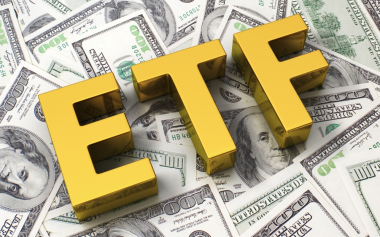Understanding stock market trends through technical analysis
Technical analysis is all about patterns. Candlesticks, one of the most widely used form of charting is all about patterns. Bar charts create patterns and lots of them. Point and figure charts create their own patterns. As though candle patterns were not enough, they invented variants and called them Renko, Kagi and Three Line break to create even more patterns. Fibonacci relations create yet another pattern while line studies are also symmetry of some sort, creating patterns. Divergences are patterns as are Reversals. Overbought and oversold are patterns too. Elliot wave is a pattern and so is the Square of nine or other geometric technics of WD Gann.

Basics of Technical Analysis
Technical analysis involves and utilizes various tools and indicators. The right mix of the tools can be used to generate converging signals that improve the probability of a direction price move.
Stock Charts
Technical analysis seeks to interpret the story of a stock's price action. Charts act as the canvas where the story is painted. The common types of charts are candlestick, bar and line charts. Charts plot the prices where trades have been executed. The time interval of the chart can be specified through the settings. Time intervals segment the price action of the stock. For a 5-minute candlestick chart, each candle represents a five-minute segment of trading that record the starting price (open), the highest price (high), lowest price (low) and last price (close) trade during the period. As the five minute window ends, it will display a candlestick that details the four data points (open, high, low, close) and a fifth data point that encapsulates the opening and closing price (body) and colors the body red if the last trade (close) is lower than the first trade (open), or green if the last trade (close) has a higher price than the first trade (open). Bar charts include the same information without painting the body. Line charts simply connect the closing price only for each time period.
Support/Resistance
By visually marking the charts, users can see certain price levels that tend to prevent prices from falling any further before rising back up again. These are known as price support levels. Users will also spot price levels that continue to provide a ceiling, that eventually causing prices to fall back down again after testing. These are known as price resistance levels.
Stock Volume
Volume measures the total number of shares traded for a specified period of time. It is used as a measure of interest that can manifest into significant price action. High volume indicates significant trading activity that triggers a breakout or a breakdown accompanied by a sustaining trend in prices. Breakouts result in higher trending prices and breakdowns result in lower trending prices. When volume is light, stocks tend to chop around in a range known as consolidation.
Trends
Trends indicate the current direction of share prices. When stock prices continue to rise higher, it is considered to be in an uptrend and vice versa for a downtrend. Uptrends indicate increasing demand for shares, as buyers are willing to pay higher prices as supply diminishes. Downtrends represent an oversupply of shares with waning buying interest resulting in falling prices. By connecting the various high and low points on a chart, you can manually generate trend lines that pinpoint support/resistance and direction of stock prices. When compared to historical templates of similar trend lines, you may be able to forecast the future direction, turning/inflection points and targets.
Technical Indicators
Having the data points plotted on a chart helps to eyeball the direction of stock prices, but deeper analysis requires more data crunching. What may have taken hours by hand in the old days can be processed in seconds thanks to the multitude of technical indicators on today's charting and trading platforms. Trends can be visually tracked with indicators like moving averages, which are dynamic lines that connect each period's closing (last) price. Charting/trading platforms enable users to manually draw in their own trend lines directly onto their charts. Different traders may have different trend lines based on the time frame of the chart as well as the starting point.
Price indicators
Indicators that output price-based information like trends, support and resistance are price indicators. They are usually displayed and tracked on the price portion of a chart.
Momentum indicators
Indicators that measure the momentum of a stock including overbought and oversold conditions are momentum indicators. Basic momentum indicators come pre-programmed in most charting/trading platforms. These indicators help traders to better time their entries and exits. When properly used, traders are able to avoid chasing prices when momentum indicators show overbought conditions like a stochastics peaking and falling back under the 80-band. While price is important, understanding how the price level is achieved can be just as significant. Stochastic, Relative Strength Index (RSI) and Commodity Channel Index (CCI) are three widely used momentum indicators.
Using a combination of price and momentum indicators can help generate effective entry and exit signals. The science of successful trading utilizes the right mix of technical indicators to generate high probability set-ups and triggers married with prudent disciplined trade management. Technical indicators optimize the process of price analysis.
So it makes immense sense for people to learn technical analysis. This will then help them harness the natural abilities and strength of the brain (the ‘interpreter') and make better conclusions. Since these interpretations occur unconsciously and automatically, with the aid of technical analysis, you can truly become an Intuitive Trader!







